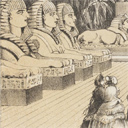0302 'Buried Empires': Showmanship and the Staging of Aesthetic Knowledge at the Sydenham Crystal Palace, 1854–1855
Identifiers (Article)
Abstract
In June 1854, the second Crystal Palace opened at Sydenham in South London. The media reported keenly on Sydenham’s large-scale archaeological reconstructions known as the Fine Arts Courts. These exhibits were designed by prominent design reformers as a means to improve public knowledge and public taste. However, the Courts attracted frequently hostile reviews from notable art critics who derided the displays as entertainment spectacles. This essay reevaluates the Courts by examining their deliberate showmanship. I trace the origins of the Sydenham display techniques in the archaeological representations made by the Sydenham Court designers for the London print, performance, and exhibition markets. Following the lead of historians of popular science, this essay emphasises the significance of popular formats and popularisation in Victorian visual culture and knowledge formation. It examines the reconstructions as visualising technologies designed to popularise, stage and communicate Victorian visual knowledge. I argue that both designers and showmen presented a virtual past through shared strategies of showmanship, the staging of expertise, and dramatic, poetic narrative. The Sydenham Fine Arts Courts were complex visual commodities, offering both instruction and diversion. Some Victorian critics found these aims mutually incompatible.
Statistics


License

This work is licensed under a Creative Commons Attribution-NonCommercial-NoDerivatives 4.0 International License.



